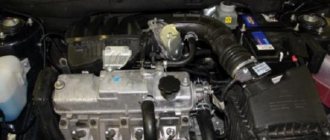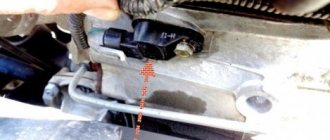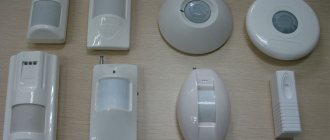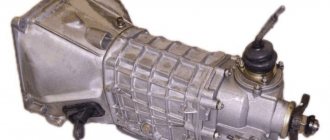A car engine uses friction parts (shafts, gears, bearings, etc.). To provide a film for soft friction and minimize wear, a lubricant is used. Its sufficient quantity is monitored by the system oil level sensor (OLS). Thanks to this, VAZ 2114 owners do not need to pull out the dipstick almost before every trip. Indeed, if there is a shortage of oil in the crankcase, a warning signal will light up on the instrument panel. Or won't it light up? Next, we will tell you how the level sensor works, where it is located, what signs indicate its malfunction, and which DUM the auto repair shop specialists recommend buying.
Functions of the DUM
During the production process, LADAs were quite rare, but were subject to modernization. Since 2004, the VAZ 2114–2115 model line began to be equipped with an oil level sensor fed into the electronic engine control unit (ECU) system. Before this, the electrical line went directly to the dashboard, like the latest VAZ 2109. Thanks to innovation, the owner can control the condition of the lubrication system without leaving the cabin, completely trusting the “brains” of the car.
In case of oil shortage, the level sensor will send a signal to the control unit, which, in turn, will inform the driver by turning on a yellow icon on the instrument panel, decorated with an oil can pictogram. According to the vehicle operating rules, the car owner must check the level on the dipstick and add the missing amount of engine oil to the engine. After this, the indicator will go out.
If you ignore the DUM signal and do not monitor the level, then oil starvation is guaranteed to cause negative consequences for the engine, even to the point of showing the “fist of friendship”. And this is an expensive repair, including replacing the block, connecting rods and pistons. If the engine “knocks”, then you will have to change the liners and bore the crankshaft. In general, “overhaul” the engine.
Replacing sensors
Oil level sensor for VAZ 2115, 2112, 2109, 2114, 2109, 2110, 21099, as well as Lada, Volkswagen, Mitsubishi, Audi, VW, BMW, Opel Omega and Vectra, Renault 406 ( scenic), Hyundai Porter, skoda octavia, lexus, toyota (Toyota, any model, mb Pajero), Volvo, Nissan, Kia, Mazda, Peugeot 307 (Peugeot), laguna (laguna), Chevrolet Lacetti, fiat, Ford, Honda, GAZ diesel or Gazelle Sprinter is installed and replaced in approximately the same way.
The main task of such an emergency sensor in a car is to show the current oil level, which can be used to judge the correct operation of the engine and its gears. In other words, to prevent the car from starting to “eat a lot” of oil, you need to clearly monitor the condition of this on-board device all the time. But also a certain place in its work is occupied by protecting the engine from getting oil there.
First, we determine whether the lamp on the panel is on. Next, you need to find out the reason why this happened. The fact is that the reasons can be completely different:
- insufficient oil level;
- engine malfunctions;
- error connecting devices (especially if you replaced them yourself);
The gear wires could also be shorted, the connector could be damaged, and much more. To begin with, special diagnostics are carried out, for example at a service station, where the cause is determined. Consider the option of disrupting the operation of the oil detection system itself.
How to change the sensor? The action algorithm is as follows:
- You need to turn off the device and disconnect all the wires leading to the sensor (you can also bypass it);
- Removing and replacing the engine oil level sensor is carried out using key 21 (diagram below);
- Next, remove the plug in the box (not every device is equipped with it, so if such a part is missing, we simply skip this step);
- The sensor is removed along with all seals and rings, and the electrical circuit is checked;
Design and principle of operation
The operating method of the oil level sensor on the VAZ 2114 is based on the reed switch effect (reed switch is an acronym for sealed contact). In other words, we have before us an electromechanical switching device with closing and opening contacts. Since Doom operates in a liquid medium, its design is equipped with a float. When the oil level is full, the float is in the upper position and the contacts are open. As soon as there is a lack of lubrication in the crankcase, the float moves down, thereby closing the contacts. When the circuit is closed, the ECU turns on the oil can information icon on the instrument panel.
Condition measurement
The oil condition sensor allows for a more rational use of the coolant lubricant resource, since the replacement period is determined not only by the manufacturer’s mileage recommendations, but also by the actual chemical and physical composition of the engine oil.
The device of the condition and oil level sensor of the N57 engine from BMW.
The meter consists of two cylindrical capacitors (6). The outer and inner metal tubes are used as electrodes, between which there is a dielectric - oil. The operating principle is based on a change in the dielectric properties of the oil during aging, which affects the capacitance of the capacitors.
When the level drops, the capacitance of the upper capacitor (5) changes. The temperature is continuously measured using a platinum temperature sensor (9). The change in capacitive characteristics of the capacitors, as well as the signal from the temperature sensor, is converted into a digital signal and sent to the DME unit. Based on the received data, the DME unit calculates oil change intervals.
Design of float systems
The operation of the sensor is based on the opening and closing of the connected electrical circuit when exposed to a magnetic field from a permanent magnet. Device:
- vertical guide (tube);
- float with magnets located inside;
- magnetically controlled contact - reed switch (liquid level sensors of this type are also called reed switches).
The location of the float on the vertical guide depends on the level - the higher it is, the farther the magnets are located from the reed switch. As the oil level in the engine drops, the float itself also drops. The approach of magnets to a normally open type reed switch provokes the closure of the contacts, due to which the low oil level sensor light on the dashboard lights up.
The reed switch uses elastic ferrimagnetic contacts, so when the liquid level rises and the influence of the magnetic field stops, the circuit opens.
Even a novice among car enthusiasts, while driving a car, will find the oil level sensor light on the dashboard without any problems. But not everyone is able to adequately respond to a situation when this light is on and does not want to go out.
As soon as the oil level sensor on a VAZ 2110 stops working, many car owners try to get to the nearest service station as quickly as possible to fix the breakdown. But is it worth doing? If you have at least basic knowledge in the field of repair, and also have an instruction manual at hand, it is quite possible to solve the issue yourself. At the same time, the financial costs will be incomparable compared to what you will pay at a car service center.
Causes and symptoms of malfunction
The oil level sensor is constantly in an aggressive environment. The main part of the body is located in the crankcase, which is regularly heated to an operating temperature of +95 °C, and at night, for example, in frost, cools down to −40 °C. Such changes have a negative impact on all materials used in the construction of the DUM (plastic, copper, steel), as a result of which their structure is gradually destroyed. These are natural causes of failure. In addition, the sensor may stop working correctly due to defects such as:
- wire break;
- disconnecting the block;
- short circuit in the circuit;
- glitch in the control unit system.
In the above cases, the light on the instrument panel will blink or stay on constantly, even when the oil level is full, as can be judged by the dipstick. And sometimes, on the contrary, due to a broken circuit, the oil can indicator does not show at all, while the owner operates the car with an “empty” pan, relying on the DUM. In addition to the electrical connections on the sensor, the sealing ring on the sensor wears out over time or the rolling of the tube on the plug deteriorates. Therefore, oil begins to break through at the junction, flowing down the cylinder block to protect the engine or to the ground.
Where installed
The oil level sensor is located on the rear of the engine. It is located under the oil filter. There is 1 wire going to it.
Functionality check
More or less experienced drivers can determine that it is the sensor that is causing confusion in the car’s operation, since there are no noticeable signs of oil leakage. Therefore, the first priority is to check the condition of the device that monitors the lubricant level.
The check is performed as follows:
- The car is placed on an overpass or inspection hole;
- The motor protection is removed. It can be put aside for a while;
- Now find the oil level sensor in the underbody space;
- Turn on the car's ignition. This way you can supply power to a device that may have failed;
- Disconnect the wires going to the sensor;
- Using a voltmeter, connect the probes to ground and the connecting block;
- If the voltmeter shows 12 volts, then the sensor is working normally.
But in the absence of tension, we can talk about one of three reasons for such a situation:
- The display unit is broken;
- There are defects on the contacts;
- There is a break in the wiring in the sensor circuit.
Therefore, if the wiring is in good condition and the contacts are clean, then further actions will consist of replacing the fuel level sensor on your VAZ 2110.
Which to choose
After you have inspected the car and identified the cause of the malfunction, you need to buy a new DUM. Independent auto industry experts and service workshop specialists recommend buying original parts or high-quality branded analogues. The serial number of the oil level sensor on the VAZ 2114 looks like this: 21083-3839210. Sometimes there are additional numbers: 01, 02, 04. These are indices of related AvtoVAZ enterprises.
Table 1. Price of the oil level sensor and its analogues
| Manufacturer | Number | Cost, rub. |
| AvtoVAZ | 21083-3839210 | 425 |
| Bautler | BTL-0010OLS | 295 |
| Kraft | KT 104873 | 250 |
| MANOVER | MR210833839 | 240 |
| Startvolt | VS-OLS 0108 | 200 |
Sources: autopiter.ru, exist.ru
Unfortunately, there are apparently no branded DUMs such as Bosch, Magneti Marelli, EPS (FACET) and others. Therefore, it is better to order an AvtoVAZ product.
How to check
Among the wide range of spare parts, there are often outright dummies. It is a fact. Therefore, experts do not hesitate to repeat the well-worn mantra: before installing an oil level sensor, it must be checked. Quite logical. Therefore, we need a multimeter (tester). Then:
- We convert the device to an ohmmeter.
- Connects contacts to the housing and sensor output.
- We move the float from the lowest position to the highest position, and back.
At the top point, the resistance should be infinitely large, and at the bottom it should tend to zero. If so, then the DUM is working and you can safely begin installing it on the car.
Types of level sensors
Here I will not talk about all possible types of level sensors. I will briefly tell you only about those that we used for vegetable oil.
Float level sensors
So, our first experience was with simple float level sensors of the PDU-2.x.x series (see figure).
These sensors work great on water and other free-flowing liquids. Most likely, they will also work, for example, with car oil. But with vegetable oil everything is not so simple.
You've probably noticed that if you spill sunflower oil and don't wipe it off, then after drying you get such a sticky film. This is where the first difficulty lies.
The fact is that the gap between the float and the rod along which this float runs is quite small (see figure below). Since during operation the same sticky film forms on both the rod and the float, over time the float simply stops moving freely and the sensor stops working.
Yes, it can be cleaned and operation will be restored again. But…
From our experience, I can say that such a sensor lasts about a month of operation. Then it needs to be cleaned. You understand that removing and cleaning the sensor every time is an unpleasant and labor-intensive task. Especially if there are a lot of such sensors, and the production is located 40 kilometers from the city.
In general, after suffering with maintenance for some time, we abandoned such sensors.
Capacitive level sensors
Our next experience is the use of capacitive sensors. We tried several types. I’ll tell you about two from which we managed to achieve at least some more or less stable work.
So, the first type is ordinary capacitive non-built-in sensors (see figure), for example, CSN E8A5-31P-20-LZ-H. Today there are many manufacturers of such sensors both in Russia and abroad. Imported ones are usually 1.5...2 times more expensive, but the quality is no better. That's why we use Russian ones.
Several examples of the appearance of capacitive sensors are shown in the figure. In fact, there are many more of these species.
At our first creamery, after some pains, we managed to achieve stable operation of such sensors. However, at the second plant everything turned out to be much more complicated.
The fact is that at the second oil plant there was a slightly different technology, and the oil, entering the weighing tank, foamed. This, of course, did not affect the weight. But when pumping oil from the scales, the oil left, but the foam remained on the sensor. And the sensor “thought” it was oil.
Attempts to adjust the sensitivity led to false alarms and, in general, did not eliminate the problem. We had to modify the oil supply design to prevent the formation of foam. However, this led to other problems.
In general, we are using these sensors for now, but we will abandon them. Now they have taken others for experiment - with a different operating principle (more on that below).
Replacement
Before repairs, a number of preparatory measures should be carried out. First, you will need a pit, overpass or lift. In other cases, you can jack up the right side of the car and secure it with a stand. Secondly, you will need a tool: a 10 mm wrench (head), an aerosol cleaner for bitumen or oil stains, a rag and gasket sealant. The step-by-step guide looks like this:
- We install the car on a pit or overpass.
- We lock the wheels with the handbrake.
- Disconnect the negative terminal from the battery.
- We climb under the car and find the sensor.
- Under the oil filter and in the sensor area, everything is usually covered in oil and dirt.
- Apply an aerosol cleaner and wait 10–15 minutes.
- We clear the repair area.
- Disconnect the wire plug from the DUM.
- Unscrew the fastening bolt (10 mm wrench).
- Carefully remove the sensor.
- Clean the seating surface.
- Apply sealant to the mating surface of the sensor.
- We put the DUM on the engine and tighten it with a bolt.
- Connect the wire plug.
Some advise removing the engine protection. But for replacement from a pit or overpass, it hardly interferes. And yet, silicone and anaerobic sealants dry at a rate of 0.3 mm per day (±2 hours). Therefore, to ensure a reliable connection, it is recommended not to drive the car until the next day. This circumstance should be foreseen on the eve of repairs and plans should be adjusted taking into account the lack of “wheels”.
Thermal sensors
It is the thermal level gauge that is most often found in the design of modern car engines. At the heart of the sensor is a heating element. The control unit alternates heating phases, briefly warming up the element to a temperature higher than the actual temperature of the oil in the engine, and cooling. It is the duration of the period of reduction in the temperature of the heating element to the temperature of the engine oil in which it is immersed that allows us to calculate the actual level.
The operating principle of this type of level gauge is determined by the presence of an oil temperature sensor. This is exactly the design and operating principle of the G266 sensor, which is installed on many Volkswagen, Skoda, and Audi cars. Both elements are combined in the level sensor housing, which is located in the engine oil pan.
Electrothermal level gauges
Electrothermal oil level sensors can be called a subtype of thermal level gauges. The sensor is based on a heating element (wire) with a high temperature coefficient of resistance. The total resistance of the heating element depends on the heating temperature. Accordingly, the deeper the sensor is immersed in the cooling lubricant, the better the heat removal from the heating element and the lower its resistance. The oil level is calculated by the control unit based on the actual voltage value at the sensor terminals.
Ultrasonic meters
The operating principle is based on the use of ultrasound - sound vibrations, the frequency of which exceeds the frequency range accessible to human organs of perception. The degree of reflection of sound waves depends on the density of the material towards which the source of sound vibrations is directed. Since the densities of the air and engine oil differ, sound waves are reflected at the boundary of the oil level in the pan. The reflected vibrations are picked up by the receiver, and the time interval between the transmitted and reflected signal is used to calculate the engine oil level.
Article on the topic: Why the reverse lights don’t light up
G266 sensor device used in the design of VAG-Group cars.
A PTC resistor is also included in the housing, which allows you to measure the oil temperature. In addition to the measuring element, the device includes an electronic measuring unit that processes ultrasonic signals and signals from a PTC resistor. From the digital logic module, signals converted into a language understandable for control units - a PWM signal - are sent through the engine ECU to the dashboard.
Advantages over thermal elements
- Low current consumption.
- Speed of signal transmission.
- Possibility of implementing a graphical indication of the actual oil level in the engine.
Measurement algorithms
- Static control. The engine has been stopped for more than 60 seconds and the vehicle is stationary (the parking brake must be applied). To level out the measurement error, the possible inclined position of the car body is taken into account. So that the owner does not wait for data after turning on the ignition, the level is measured immediately after opening the driver's door.
- Dynamic level control. Activated when the vehicle is in motion. This takes into account: crankshaft speed, longitudinal and lateral acceleration, engine temperature, and the position of the hood limit switch. In this case, the movement cycle since the last activation of the hood must be more than 50 km.
The role of the hood switch
VAG in VW, Audi, Seat, Skoda cars uses a rather interesting scheme for connecting the engine oil level sensor. If the low level indicator lights up, then 2 conditions must be met for it to go out:
- activation of the hood switch (it is logical that without opening the hood it is impossible to add oil);
- level replenished.
If, after the low level light came on, you opened the hood but did not make up for the deficiency, the indication will go out and light up again only after 100 km. If the amount of coolant reaches a critical level, the low oil pressure light on the instrument panel will light up.
If the hood switch on a car is faulty, the light will not go out, even if the level is normal. This feature of the connection diagram must be taken into account when diagnosing the system.
Article on the topic: Repairing an Automatic Transmission yourself: photo and video instructions
Light indication modes
The simplest device for controlling the amount of liquid involves only lighting a light bulb (oil can) on the dashboard. More advanced systems, including those used by VW, have several modes of light indication of low lubricant level in the engine.
On vehicles with graphical display, the amount of oil can be estimated using a scale projected onto the screen.










